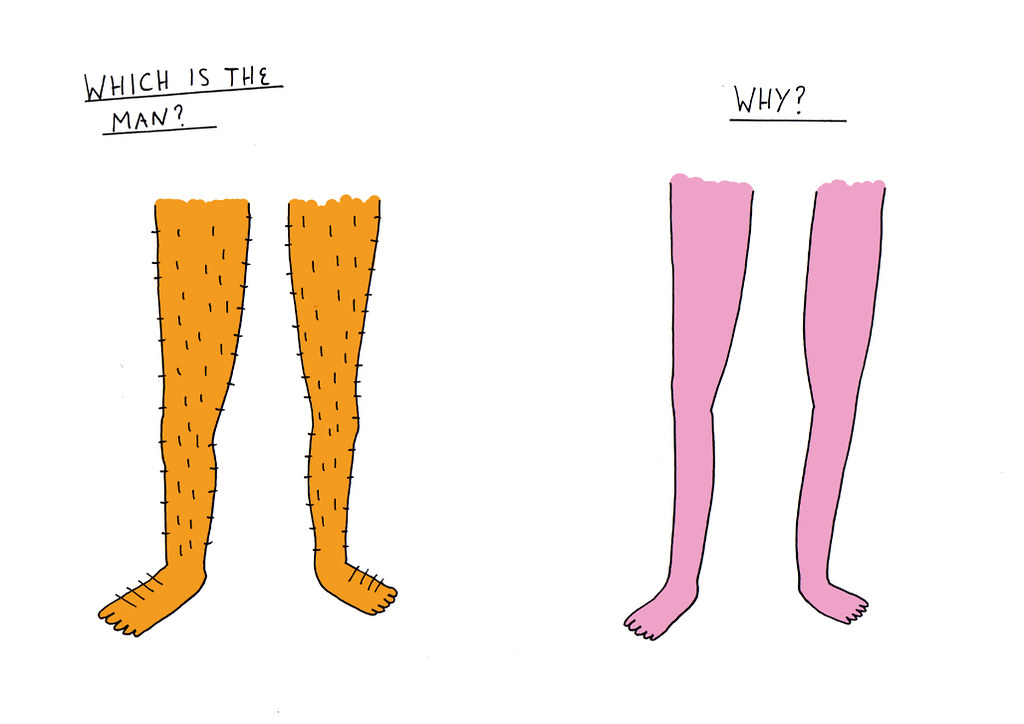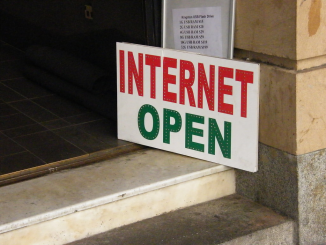
As the most basic means of information exchange and dissemination for human beings, digital media is born from the progress of the times, and it is the Internet that carries all this. The development of the Internet for nearly half a century cannot be said to have been affected by structural inequality, but in fact, it is a development that has been affected to a large extent. At the same time, the impact is different in different aspects. It is a double-edged sword. In some aspects, this power is increased, but at the same time, it is also inhibiting the decrease in another aspect. While discussing these two issues, the article will discuss and demonstrate the three main aspects of race, gender, and nationality.
The Internet and digital media are inseparable and help each other develop. Looking at the influence of the two in the past half-century, the Internet has been affected by structural inequality to a very large extent. And it is reflected in the sensitive aspects of race, gender, and nationality. Structural inequality refers to those institutional inactions that seem neutral and do not pay attention to individuals, established structures, and socio-political norms, and the Internet has been greatly affected by this (Pan, Yan, Jing & Zheng, 2011). The U.S. government lobbied the technology industry and the development of the Internet to influence the Internet through structural inequality in the country and policies (Popiel, 2018). At the same time, the penetration and influence of digital and media on the Internet can be traced back to the Second World War and the “new communism” in 1960, as well as in Silicon Valley today. The flattening of hierarchies and entrepreneurial structures is also the impact of structural inequality on the Internet. The influence is connected (Lusoli & Turner, 2021).

Image by World Bank Photo Collection is licensed under CC BY-NC-ND 2.0
Gender, race, and nationality play a significant role in the influence of structural inequality on the Internet. First of all, structural inequality is based on social and social systems. Since ancient times, human society has had different social statuses between men and women, and gender influences the Internet in this social system. Men occupy more positions and still exist today, and the Internet tends to favor men rather than women. According to the percentages of men and women using the Internet from 1996 to 1999 were 17% and 10% to 38% and 25%, the use and access of men and women on the Internet is not only a factor of gender but also social class and status (Bimber, 2000). At the same time, most children have had gender gaps in Internet use since childhood. Most parents prefer boys to learn the Internet and girls to learn the art. This structural inequality has caused more male participants than females in the development of the Internet (Dixon, Correa, Straubhaar, Covarrubias, Graber, Spence, Rojas, 2014). At the beginning of the race, it was considered that there would be no problems with the Internet, but the fact is that the Internet’s racial issues have become more and more intense under the influence of social structural inequality. Long-standing structural inequality has led to more conflicts among people in the online environment. In the case of Facebook, they refused to delete word searches on racial sex on the Internet with the exemption. This is caused by the long-term impact of this unequal development on the Internet (Noble, 2018). Race issues are mainly played on the Internet in online news, social platforms, and blogs. The influence of the Internet under the subtle influence of structural inequality has led to the development of racial issues on these platforms. Twitter is also the most powerful proof, it will often tag about race (Daniels,). Nationality is also connected to the Internet, but different countries have structural inequalities that affect the Internet. The country’s indulgent development of structural inequality has led people to attack or harass people of certain nationalities on the Internet. For example, some European netizens regarded the Germans as Nazis, and some Asians believed that the Japanese were all militarists. It is undeniable that some are facts, but the network is affected by structural inequality only to amplify rather than stop it (Hrynyshyn, 2008)

“Gender Stereotyping” by sickboyy is licensed under CC BY-NC-ND 2.0
The development of the Internet is increasing the unequal power of race, gender, and nationality while also reducing another part. It is a two-sided relationship. The development of the Internet has increased the unequal power of the Internet on certain groups of people, such as attacking the status of women and people of color, but has weakened and restricted the monopoly of large-scale Internet companies in Silicon Valley, such as Google and Twitter (Terry, 2019). There are also regulators like Australia’s ACCC that have exposed a lot of facts to the media. Although it has enhanced authenticity, it has also weakened public information security (Terry, 2019). The development of the Internet under the influence of inequality has strengthened the rapid development of this industry and technology, but it has also weakened the economy and diverged the global economy. The indulgence of large Internet companies has strengthened the monitoring and management of the national public, weakened security and privacy, and made terms such as “black women” frequently appear in search headlines (Noble, 2018).

“Stop Killing Black People” by Miki J. is licensed under CC BY-NC-ND 2.0
In terms of gender, the development of the Internet has increased the exposure rate and weakened the obstacles to the development and promotion of the feminist movement. The increased inequality is concentrated on the Internet’s unkindness to women, a large number of discriminatory and insulting search terms, and a large number of Internet workers who are male. The weakened inequality has greatly increased the implementation of the feminist movement, allowing more women to defend their rights and protect women, and make the whole society treat women fairly. There are a large number of gender-related discriminatory entries on Google and Twitter every day. Men are rarely given relevant names, while women are not allowed to drive, should not work, and should do housework and other discriminatory entries (Noble, 2018). A large number of women have begun to use the Internet to fight for equality and due benefits for themselves. The majority of Internet workers in the United States are more and more women. At the same time, the convenience of the Internet allows women to go to protests to resolve unfair policies against women (Vickery, 2018). ). The development of the Internet has strengthened the discrimination against some people of color. Not only in reality, but the Internet has personally attacked people of color, led by blacks, and linked them with pornography and vulgar things. However, the development of the Internet has enabled the government to issue corresponding policies more quickly and efficiently to weaken and stop this deliberate attack on race and to maintain the principle of equality in life. Google and similar search browsers often display discriminatory entries related to “black girls”, and most pornographic websites will also write pornographic titles of black girls, deliberately binding people of color to be pornographic (Noble, 2018). To weaken online racial discrimination and other issues, most countries in the world, led by the European Union, drafted most of the laws and bills against online discrimination, all to protect social stability and unity (Brennan, 2009). The development of nationality on the Internet has also strengthened the cathartic outlet of some racists but has reduced the barriers between people of different nationalities. Most racists insult and slander the term “Jew”, a term representing nationality, and the Internet have deepened the influence of this behavior (Noble, 2018). The development of the Internet has also made it easy for most people of different nationalities to cooperate, such as multinational cooperative enterprises.
Finally, the development of the Internet has indeed been largely affected by structural inequality. It increases this inequality while also weakening it. This is a kind of joint relationship. Race, gender, and nationality reflect this influence in social class, male and female social status, childhood education, and different attitudes to nationality. Gender increases inequality and reduces the obstacles to women’s rights, race increases discrimination stereotypes but introduces corresponding laws, and nationality increases discrimination attacks but reduces the complexity of cooperation. In general, there are indeed many structural inequality problems in the development of the Internet, but these problems will be resolved in the future as people gradually improve and progress.
Reference List
Popiel, P. (2018). The Tech Lobby: Tracing the Contours of New Media Elite Lobbying Power. Communication, Culture & Critique, 11(4), 566–585. https://doi.org/10.1093/ccc/tcy027
Lusoli, A., & Turner, F. (2021). “It’s an Ongoing Bromance”: Counterculture and Cyberculture in Silicon Valley—An Interview with Fred Turner. Journal of Management Inquiry, 30(2), 235–242. https://doi.org/10.1177/1056492620941075
Noble, Safiya U. (2018) A society, searching. In Algorithms of Oppression: How search engines reinforce racism. New York: New York University. pp. 15-63.
Terry Flew (2019), ‘Guarding the Gatekeepers: Trust, Truth, and Digital Platforms’, Griffith Review 64, pp. 94-103.
Pan, Z., Yan, W., Jing, G., & Zheng, J. (2011). Exploring structured inequality in Internet use behavior. Asian Journal of Communication, 21(2), 116–132. https://doi.org/10.1080/01292986.2010.543555
Bimber, B. (2000). Measuring the Gender Gap on the Internet. Social Science Quarterly, 81(3), 868–876.
Dixon, L. J., Correa, T., Straubhaar, J., Covarrubias, L., Graber, D., Spence, J., & Rojas, V. (2014). Gendered Space: The Digital Divide between Male and Female Users in Internet Public Access Sites: Gendered Space: The Digital Divide. Journal of Computer-Mediated Communication, 19(4), 991–1009. https://doi.org/10.1111/jcc4.12088
Daniels, J. (2013). Race and racism in Internet Studies: A review and critique. New Media & Society, 15(5), 695–719. https://doi.org/10.1177/1461444812462849
Hrynyshyn, D. (2008). Globalization, nationality, and commodification: the politics of the social construction of the internet. New Media & Society, 10(5), 751–770. https://doi.org/10.1177/1461444808094355
Vickery, J. R. (2018). This Isn’t New: Gender, Publics, and the Internet. In Mediating Misogyny (pp. 31–49). Springer International Publishing. https://doi.org/10.1007/978-3-319-72917-6_2
Brennan, F. (2009). Legislating against Internet race hate. Information & Communications Technology Law, 18(2), 123–153. https://doi.org/10.1080/13600830902941076


